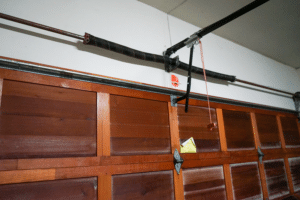Garage door springs replacement are vital components within the intricate workings of garage door mechanisms. These unassuming yet robust elements bear an immense amount of tension, responsible for the smooth raising and lowering of heavy garage doors. As these components age, they can fail due to natural wear and tear or sudden breakage, necessitating their timely replacement to ensure the continued convenience and security provided by a fully operational garage door.
This article aims to demystify the process of replacing these critical components by offering expert advice and methods from seasoned professionals. The objective is to create a shared understanding of the complexities surrounding spring replacements for garage doors, fostering a sense of community among both DIY enthusiasts and experts. The following sections provide a comprehensive step-by-step guide, carefully outlining each stage involved in spring replacement procedures.
By equipping readers with essential knowledge in this domain, it’s anticipated that their confidence levels will increase when embarking on similar tasks independently or when engaging with professionals.

Grasping the Role of Springs in Door Mechanisms
In the intricate dance of garage doors, springs perform a pivotal role by storing mechanical energy and facilitating the smooth and efficient movement of the door. These components operate under substantial tension, contracting as the door closes and expanding as it’s lifted. Essentially, they act as counterweights, alleviating the burden on the motor during operation. This delicate balance between potential and kinetic energy within the spring system ensures that even the heaviest of garage doors open and close with relative ease.
Going further into specifics, there are two primary types of garage door springs replacement: torsion springs and extension springs. Torsion springs are typically mounted above the door and function through twisting or torquing when force is applied, creating a counteracting force that aids in lifting the door. In contrast, extension springs are positioned along both sides of horizontal tracks, relying on elastic potential energy to expand and contract, achieving similar outcomes as torsion springs. Understanding these differences can assist individuals in identifying which type their system employs.
While some homeowners may be tempted to replace these critical components independently, with the aim of saving costs or time, it’s important to recognize that due to their substantial tension, handling them without professional guidance could result in severe injuries or damages. Therefore, seeking advice from industry experts not only ensures personal safety but also guarantees longevity through proper installation techniques tailored to the specific type of spring system used in garage doors globally.
Step-by-Step Guide to Spring Replacement
Venturing into the intricate process of replacing coiled tension devices presents an engaging yet challenging task that demands meticulous attention. Commencing the procedure necessitates ensuring that all necessary tools are at hand: locking pliers, winding bars, and a sturdy ladder.
With these tools prepared and accessible, the next crucial step is to secure the door in its down position. This is achieved by using a piece of wood or a similar object as a stopper under the door. The subsequent phase involves the loosening and removal of the old springs. This is executed by clamping one side with locking pliers and unwinding it by inserting winding bars into the holes at its end.
Following these initial steps, the focus shifts to the installation of the new springs. This phase begins by attaching one end of each spring to their respective ends on the central rod. It’s essential to install them in such a way that they coil upwards from beneath when viewed from behind. Once this alignment is achieved, cones at each end of both springs should be firmly tightened onto the central rod, positioned against the bearing plates at either end of this rod.
Safety remains paramount throughout every step of this process. Hence, handling coiled tension devices with caution is imperative due to their potential to cause injury if mishandled. After securely positioning both springs onto the rod, they need to be wound up using winding bars until the appropriate tension is reached, typically after making seven full turns around each spring’s shaft.
The final part of this intricate operation involves reattaching cables to the bottom brackets on either side of the door before testing its functionality post-replacement. In summary, the replacement of garage door springs demands diligence and precision but can significantly contribute to improved functionality if executed correctly.

